Most of us have heard of the early World’s Fair Expositions. They began to educate and entertain the public, offering a glimpse into other cultures and a vision of the future to inspire invention and new ways of thinking.
The first World’s Fair was held in London in 1851 and was called The Great Exhibition of the Works of Industry of All Nations. It was the idea of Prince Albert, consort of Queen Victoria and Sir Henry Cole, a pioneer in industrial design. A great Crystal Palace constructed entirely of steel and glass was built to house the exhibition which included fine arts, silver, ceramics and textiles from the far east and new types of farm implements just to name a few. Ninety-two different countries participated, and over six million people attended the Fair.
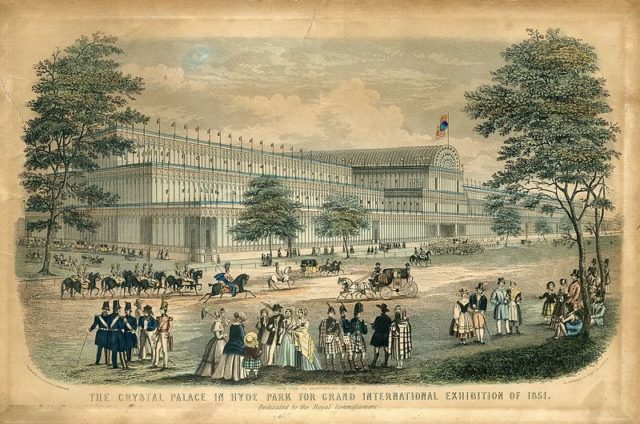
The next World’s Fair, the Exposition Universelle des produits de l’Agriculture, de l’Industrie et des Beaux-Arts de Paris 1855 was hosted by France. Thirty-four countries participated, and attendance was just over five million. Paris also hosted the next exposition in 1867 which saw an attendance of fifteen million.
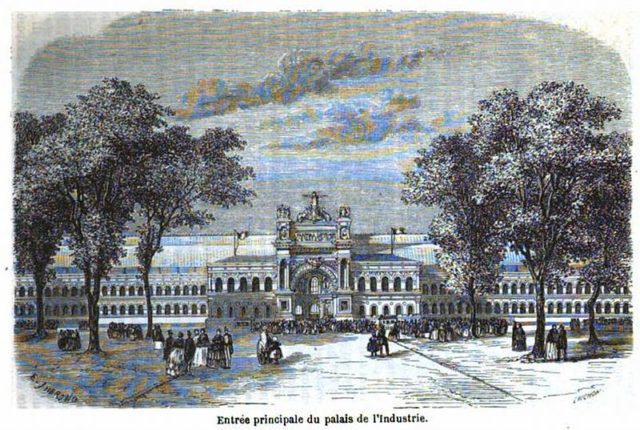
The 1873 Fair was held in Vienna, Austria. During the building of the exposition site, the Danube River was redirected to make room for the Fair.
In 1876 the World’s Fair came to the United States and was set up in Philadelphia, Pennsylvania to coincide with the Centennial celebrations. Thirty-five countries set up exhibits and over ten million attended.
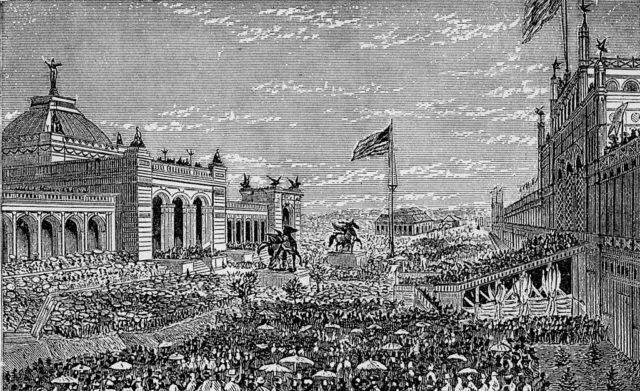
The Exposition returned to Paris in 1878 with a steadily increasing attendance of over sixteen million.

New Orleans, Louisiana hosted in 1884, Antwerp Belguim in 1885, and in 1886 the Exposition was split between Edinburg, Ireland and London.
Adelaide, Australia held the Jubilee International Exhibition in 1887 and in 1888 the Fair was again split between Barcelona, Spain; Glasgow, Scotland and Melbourne, Australia.
Paris, again, hosted the Exposition Universelle in 1889 in conjunction with the opening of the Eiffel Tower. The attendance was marked as over thirty million.
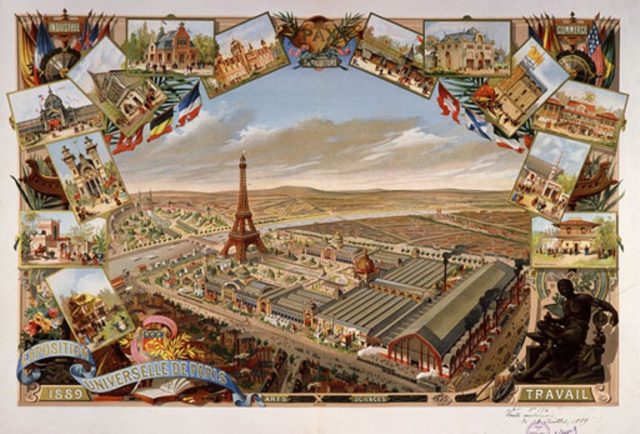
In 1893 the World’s Columbian Exposition was held in Chicago, Illinois. It was by far, the largest exposition held to date. The site covered over 700 acres of reclaimed swampland on the shore of Lake Michigan.
The Fair celebrated the 400th anniversary of Columbus’ discovery of the New World. The main thoroughfare was fashioned after the Italian city of Venice with waterways and boats carrying visitors to different sections of the Fair. It was named The White City due to the gleaming white buildings that lined the waterways. There were fountains and enormous statuary, all reminiscent of a Greek Metropolis.
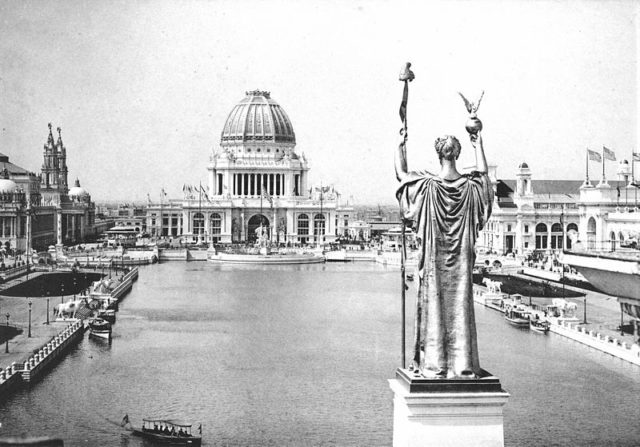
Each state created and built its own building which was representative of what the state had to offer. Many states spared no expense in showing their state pride. The Liberty Bell was moved temporarily to the Pennsylvania exhibit that was a replica of Independence Hall, and California’s exhibit was an oversized Spanish Mission with giant citrus sculptures. A building constructed entirely of corn on the cob was on exhibit in the Agricultural building, and in the Mining Building Montana erected a life-size solid silver replica of the Lady Justice holding her scales.
Other countries also had exhibits representing what they had to offer. Each country built its own building and displayed products representative of their culture. France recreated a wing of Louis XVI’s Palace of Versailles. Reproductions of Columbus’s ships, the Nina, the Pinta and the Santa Maria, built in Spain, were sailed to the United States for the occasion. Norway sailed a reproduction of a Viking ship.
The Japanese exhibit was the country’s first representation at the World’s Fair. Up until 30 years before this Japan had been closed to outside influence by the Shogunate political systems. Not much was known of Japanese culture by the general public.
The exhibit was built on an island on the man-made lake, and it was very popular with the guests. The simplicity and serene beauty of the reproduction of a Japanese village provided a relief from the high energy of the rest of the Fair. This was most of the country’s first exposure to the Japanese and most visitors were impressed. Harper’s Magazine even published an article praising the efficiency of the Japanese workers setting up the displays.
The centerpiece of the Fair was the Manufacturing and Liberal Arts building. A long domed building of 540,000 square feet; it was almost a city in itself. Anything anyone could ever want was on display. Furniture, exotic rugs, French perfume, the latest fashions from Paris, Venetian lace, pottery, china, paintings, guns and the list goes on. Louis Comfort Tiffany had an exhibit of jewels and glass.
It even had a newly invented Otis Elevator to an observation deck on the roof where the lights of the Fair could be seen from above.
Electric lights were making their way into larger cities by this time, but few had electricity in their homes and outlying areas had none at all. The thousands of lights at the Fair mesmerized visitors who had never seen an electric light bulb.
The Chicago World’s Fair was held during a time of rapid industrial growth. The exhibits displayed new machinery for mining and farming, as well as machinery for the new notion of mass production of everyday items. The Machinery Building held examples of every known machine. Printing presses, ice cream making machines, candy machines, textile looms, steam engines, and all of the generators that provided power to the Fair were under one roof. Few visitors could stay very long due to the enormous level of noise generated.
The film industry was born at the World’s Fair when Thomas Edison displayed his Kinetoscope, giving visitors a first look at moving pictures.

The Palace of Fine Art held over 10,000 works of art shipped in from all over the world. So many paintings and sculptures were sent it was impossible to place them all in any type of logical display other than by their country of origin. It was more a matter of finding an empty space where a piece could fit.
The Women’s building was designed by a female architect. The exhibit documented achievements made by women and featured works and inventions made by women from all over the world. Queen Victoria took a special interest in this exhibit and donated embroidery done by the royals, and the Empress of Russia donated clothing worn by her court.
Germany put on an impressive exhibit of their military might displaying cannons and guns as did the U.S. Navy and the U.S. Ordinance Department.
The very first public aquarium was displayed at the Fair, and for the first time people were able to enjoy the beauty of the different types of fish found all over the world and began to regard them as more than just a food source.
The Transportation Department displayed locomotives, wagons and the first Model T automobile, a new concept in transportation.
George Ferris debuted his 25 story Ferris wheel at the Chicago World’s Fair.
The 1894 World’s Fair was split between Antwerp, Belgium, San Francisco California and Hobart Australia.
In 1895 the city of Atlanta, Georgia hosted The Cotton States and International Exposition
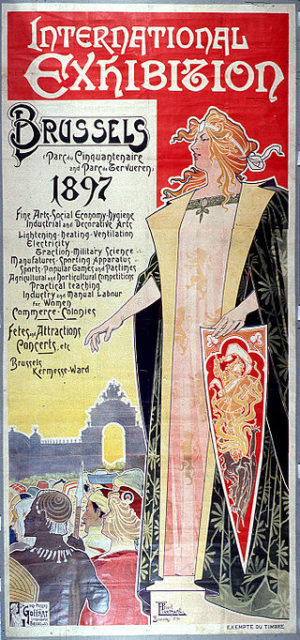
The 1897 Fair was split between Brussels, Belgium’s-Exposition Internationale de Bruxelles, Guatemala City, Guatemala’s-Exposición Centroamericana, Nashville, Tennessee’s-Tennessee Centennial International Exposition and Stockholm, Sweden’s-Allmänna Konst-och Industriutställningen.
In 1898 Omaha, Nebraska held the Trans-Mississippi and International Exposition.
In 1900 Paris again celebrated the World’s Fair with the Exposition Universelle. This time the Fair was held in conjunction with the second modern Olympic Games. An area of 296 acres housed the Fair and its exhibits. Some of the exhibits from earlier Paris Fairs were brought back as well as new exhibits. There was a “trottoirs roulants” – a moving walkway to help visitors get around. This was experimented with at the Chicago Fair in 1893 but was so fraught with problems it never became a viable reality. The sidewalk had three lanes, one slow, one medium and one fast. Visitors compared the three speeds to various stages of life – youth, middle age and old age.
The Exposition featured the newest technologies, especially those powered by electricity. Many of the buildings were built in the new Art Nouveau style. As with Chicago, a few years earlier each country submitted a building to highlight accomplishment made by its citizens in addition to general exhibits like the Palace of Optics, where the first moving pictures were displayed. A giant telescope was also displayed in the Palace of Optics. The Great Exposition Refractor was the largest telescope at that time. A giant replica of the world, called the Globe Céleste, sat near the Eiffel Tower decorated with astrological symbols. Some countries, instead of erecting exhibits to show the forward thinking future, set up buildings to display the history of their countries. The United States set up a replica of the Capitol Building with a statue of George Washington on a horse gracing the entrance. The Dutch East Indies Pavilion recreated an 8th-century Buddhist temple.
A favorite among the visitors was a dinner for the French President Loubert with everyone in attendance invited. Eleven kitchens and six hundred and six tables were attended by waiters in automobiles using telephones to take orders.
The 1900 Paris Exposition was a huge success in every manner except financially. Attendance was much lower than expected and Paris lost ₣82.000 (francs), and many who had invested money into the Exposition completely lost their investments. The concessionaires were losing money, and large parts of the Expo had to be closed.
The next Exposition in 1901 was split between Buffalo, New York; Glasgow, Scotland and Charleston, South Carolina.
The 1902 Fair was split between Turin, Italy and Hanoi, Vietnam. World’s Fairs continued on in every year with the exception of 1912 and 1914 and were mostly held in European counties until the 1915 and 1916 Expos both held in California.
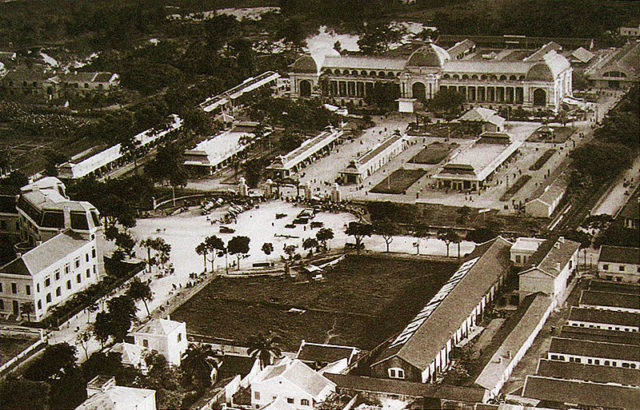
None were held during the years 1917 to 1922 due to the First World War. The 1923 Fair was picked back up by Rio de Janeiro in Brazil.
Paris hosted the Fair again in 1925, 1931, and 1937 and Chicago was chosen again in 1933. New York hosted in 1964 and Okinawa, Japan in 1970.
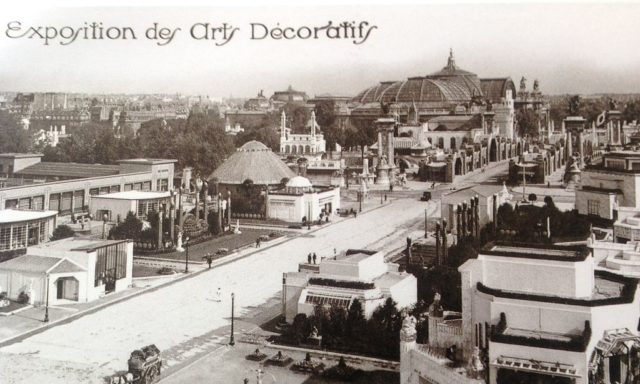
The Fairs have toned down from the 18th-century extravaganzas, and the public is not as interested in the Expos as they once were.
Even so, the Expos are still being held. The last expo was in 2016 in Milan, Italy and the 2017 Fair is scheduled to take place in Astana, Kazakhstan. Dubai, in the United Arab Emirates, is scheduled to hold the Fair in 2020.
